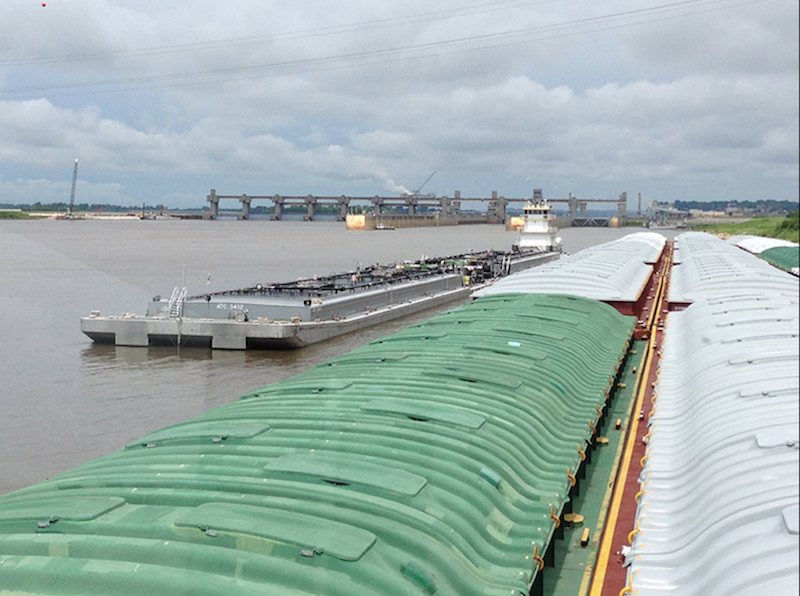The roughly $1 trillion infrastructure package headed toward passage this week in the Senate would give a sizable boost to funding for locks and dams along the nation’s inland waterways, allowing completion of many languishing projects and the start of others that have been in the queue for years.
The bipartisan deal that was finalized over the weekend between the White House and Republican and Democratic senators would provide much-needed funds to also shore up the nation’s aging roads, airports, bridges, pipes, ports and internet connections.
Infrastructure is a top domestic priority for President Biden, and this agreement represents the first time in years that Congress has been able to agree on a plan that has a realistic chance of passing, although it does face hurdles in the House, and could be further modified by lawmakers in both chambers. The compromise is just the first phase of Biden’s broader infrastructure plan, which also includes social, education, clean power and health elements that will be part of different legislation.
For inland waterways, where the majority of locks and dams are more than 50 years old and require constant and costly repairs that slow down water commerce, the plan would allocate $2.5 billion for new and ongoing construction, according to Tracy Zea, president and CEO of the Waterways Council, an industry-funded group that advocates for waterways improvements. The package would also provide $4 billion for operation and maintenance of inland infrastructure and dredging, which could help inland ports.
If the numbers are approved by Congress, Zea said that the $2.5 billion would help complete three ongoing projects on the inland system (Chickamauga Lock in Tennessee, Kentucky Lock and Montgomery in Pennsylvania), and start construction or major rehab on at least three others. “That’s six projects with $500 million left over,” he said. “This is a very big deal.”
He said cost-sharing between the industry and the federal government under the Inland Waterways Trust Fund would be waived as this would be a fully federal contribution to modernizing the nation’s locks and dams.
Zea said WCI had initially asked for $3 billion in an infrastructure package, so “$2.5 billion is a fantastic number.” He said this infusion of new federal spending along with strong annual appropriations for the inland system would help complete many of the 15 priority inland projects identified by the U.S. Army Corps of Engineers over the next five years.
Senate Democratic leaders are pushing to approve the deal this week, before lawmakers leave for the annual August recess, but that timetable became complicated yesterday when Sen. Lindsey Graham, R-S.C., announced that he has tested positive for the coronavirus and must isolate for 10 days. Graham was one of 10 GOP senators who helped negotiate the deal and his vote is important to final passage.
The bill must also pass the House, which is currently in recess and won’t take up the measure until after Sept. 20. Trouble could be brewing there, as some liberal Democrats don’t think the infrastructure bill goes far enough.
The Waterways Council is “hopefully optimistic on a deal,” Zea said. “There have been significant steps taken and we feel that this has a really good chance of becoming law.”





